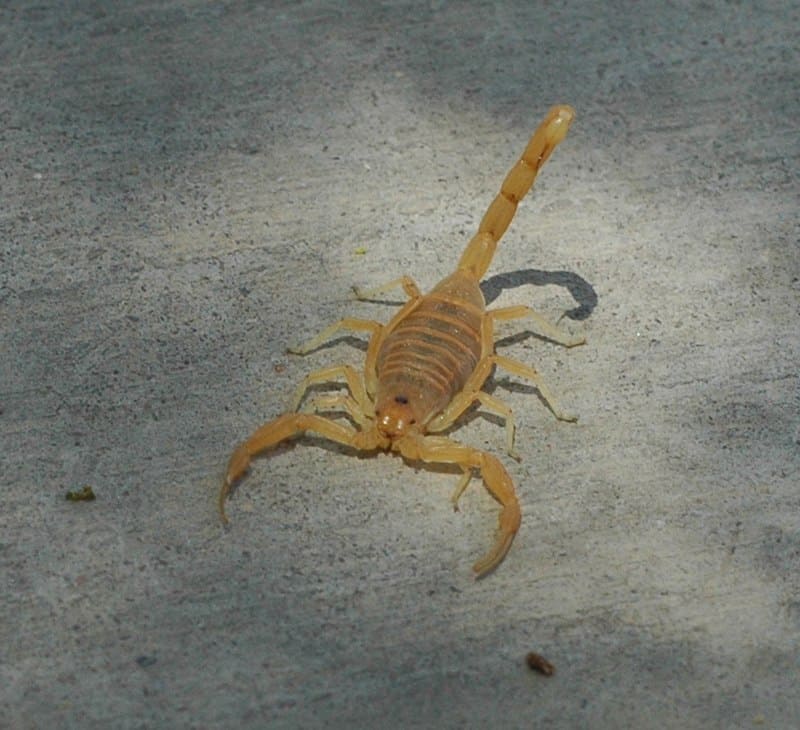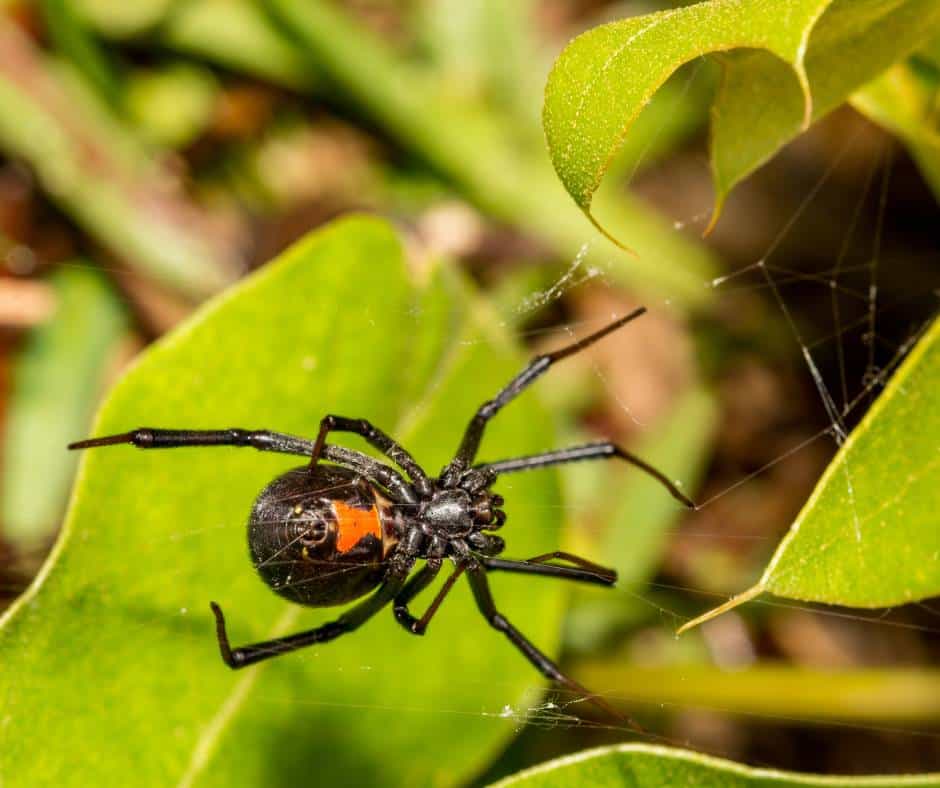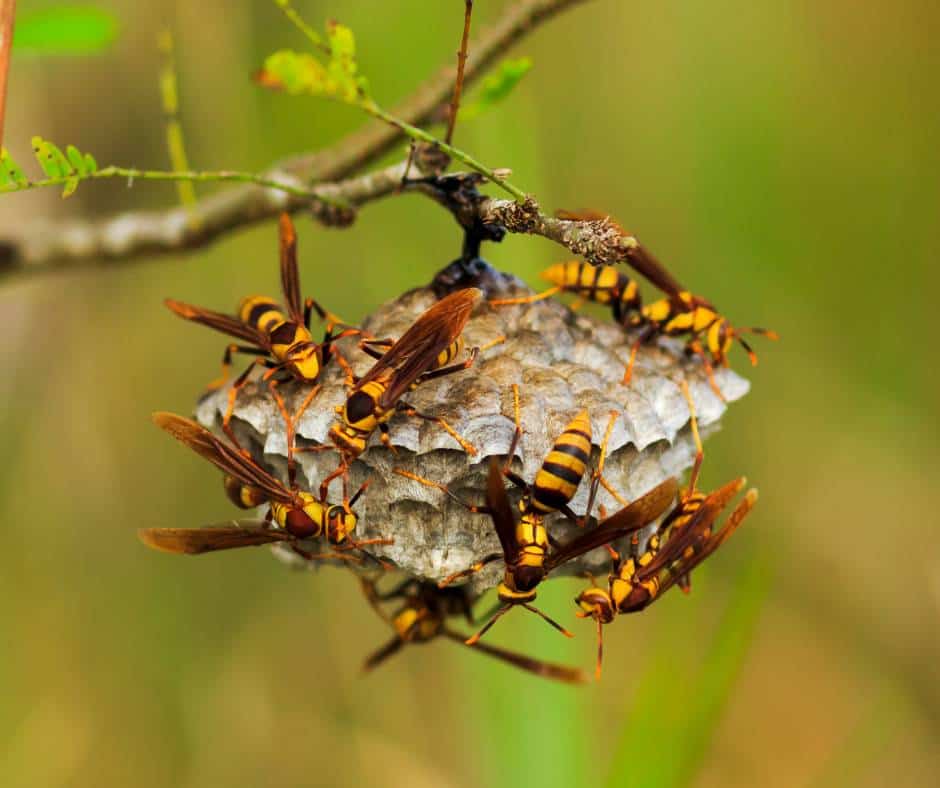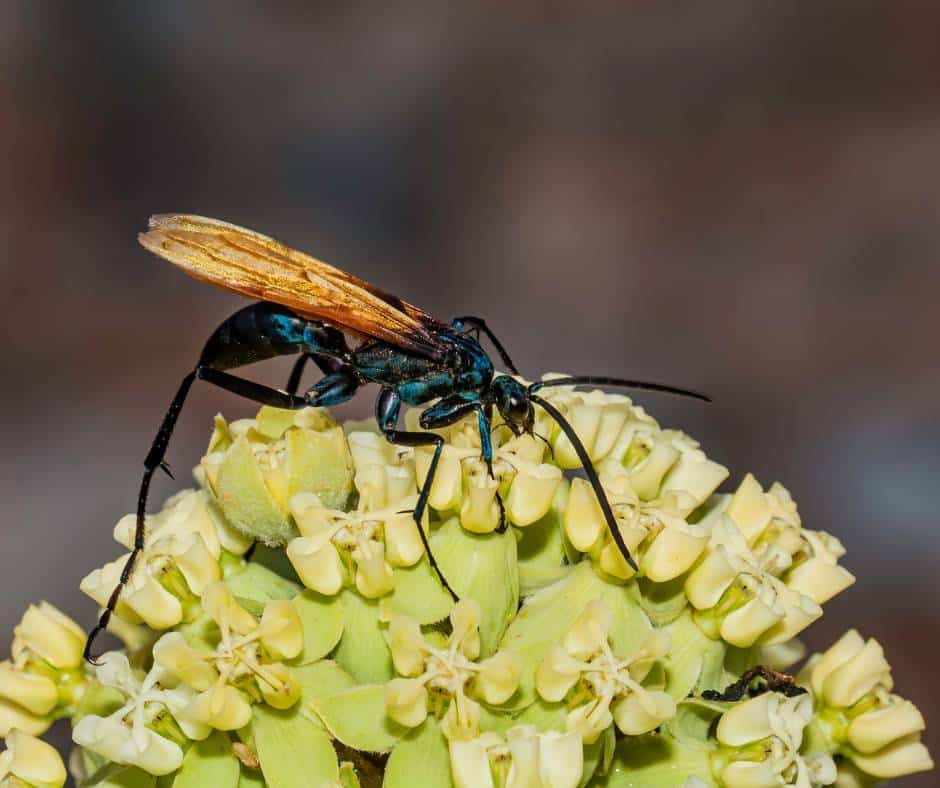There are many different types of dangerous animals in California, from the obvious apex predators like mountain lions to lesser thought of, pain-inducing critters like stingrays and tarantula hawk wasps. These animals can cause injury and even death, but the good news is your odds of dying from an animal encounter in the Golden State are incredibly low.
The purpose of this article is to not only highlight potentially dangerous animals in California, but also hopefully help you learn that many of the animals you might fear have an incredibly low chance of ever harming you. It may also open your eyes on how to avoid dangerous animal encounters as well as what to do should you ever face potential danger.
It is important to remember that the most dangerous animal in all of California is the human. There were over 2,000 murders in California last year, which accounts for many times more deaths than any of these “dangerous animals” are responsible for.
13 Dangerous Animals in California
Mountain Lions

Mountain lion, cougar, puma, panther, and even catamount. Whatever you call it, these are one of California’s primary apex predators and the largest feline species in North America. We tend to call them mountain lion’s in my neck of the woods, where sightings are relatively common.
I would imagine most people who live near the wilds of California have a healthy fear of mountain lions. After all, they are large (about 100-200 lbs), have strong teeth and long claws, and can run up to 50mph! But, mountain lions are known for their solitary and elusive nature and rarely come in contact with humans.
According to the California Department of Fish and Wildlife, there have been 21 confirmed mountain lion attacks in California between 1986 and 2022. That is less than one per year. Only three have been fatal. This means your odds of being killed by a mountain lion are about one in a billion.
About half of the people attacked have been children ages 10 and under. This is why it is important to keep young children within arm’s reach when hiking in mountian lion habitat! Mountain lions may see young children as possible prey. My husband mountain bikes regularly in a park where mountain lions are regularly spotted it is remarkable how many people he sees leaving their young children unattended!
So, what do you do if you encounter a mountain lion? Odds are, mountain lions will see you but you will never see them. And if you do see them, it will be so quick that you won’t have time to react like my neighbor who was mountain biking in Whiting Ranch Regional Park when I cougar quickly trotted across the trail.
According to the National Park Service you should do the following if you encounter a mountain lion:
- Stay calm while facing the lion and standing tall.
- Do not run from a lion. If you run you will trigger the lion’s prey instinct. Instead, keep eye contact and back away slowly. Avoid crouching or bending over.
- Do all you can to appear intimidating. This includes yelling in a loud, deep voice for the mountain lion to go away, clapping your hands loudly, and throwing sticks and rocks at the lion if it attempts to approach you.
If you do see a mountain lion, you should report it. It helps park rangers keep track of the animals’ locations and keep everyone safe, including the lions.
Did you know? Mountain lions are listed as a “specially protected species” under California law. They are also protected under the California Endangered Species Act. Despite these protections, they face various threats such as habitat loss, traffic accidents, and lack of genetic diversity due to a lack of wildlife corridors in more urban areas.
The Liberty Canyon Wildife Crossing in Agoura Hills is currently being built over 10 lanes of US-101 and expected to be completed in 2025. Once completed, it will be a critical wildlife corridor habitat linkage between the Santa Susana Mountains, the Simi Hills and the Santa Monica Mountains.”
Great White Sharks

California’s coastline is known for its population of great white sharks. While shark attacks are rare, it’s important to be mindful when swimming or engaging in water activities in known shark habitats.
Great white sharks are the ocean’s version of an apex predator. Adults are typically 12 to 20 feet long, weigh 1500- 2400 lbs, and swim up to 35mph. Plus, they have hundreds of sharp, triangular teeth! They are ambush-style hunters that eat marine mammals and fish.
Great white sharks prefer nearshore waters, including coastal areas and offshore islands like California’s Channel Islands. They are known to frequent areas where their main prey, such as seals and sea lions, are abundant.
According to the California Department of Fish and Wildlife, “Since 1950, there have been 209 shark incidents in California involving all species of sharks, at least 185 of which involved white sharks. Of those, 15 were fatal and all of the fatalities involved white sharks.”
Of California’s 19 coastal counties, San Diego County currently holds the record for the most shark incidents since the 1950’s at 24. Still, you shouldn’t be afraid to swim in the ocean. According to a Stanford study, you have 1-in-17 million chance of being attacked by a shark in California. You are more than 1,800 times more likely to drown.
Recent drone studies done by Cal State Long Beach’s Shark Lab have discovered that many beaches off the coast of Southern California have become white shark nurseries in recent years as the water warms. Most of the sharks tend to be 50-100 yards offshore and swimming alongside humans regularly with no issues whatsoever.
Del Mar and Carpenteria seem to be popular juvenile white shark spots but most people hanging out past the breakwater (mainly surfers and paddleboarders) have no idea there is a shark swimming near them! The great news is that even with this increase in shark activity, there hasn’t been an increas in shark attacks.
Stingrays

Stingrays are found in shallow coastal waters in California. They are not aggressive towards humans, but they can be dangerous if they are stepped on since they have venomous spines which can cause severe pain.
Stingrays are primarily bottom-feeders, and their diet mainly consists of small fish, crustaceans, mollusks, and other invertebrates. They use their flat, disc-shaped bodies to move along the seafloor while searching for prey. The primary stringray found in California in the round stingray.
In California, there is a seasonal pattern of stingray activity, commonly referred to as “stingray season.” This usually occurs during the warmer months, from late spring to early fall. During this time of year, locals know to do the “stingray shuffle” when entering the water. This involves shuffling your feet along the sand as you enter the water, which creates vibrations that can alert nearby stingrays and give them a chance to move away.
Chris Lowe, the director of the Shark Lab at Cal State University, Long Beach has deemed Southern California the “stingray capital of the world”. There are thousands of sting ray injuries in Southern California each year.
Did you know? It is estimated that over 30,000 stingrays live in Seal Beach where the San Gabriel River meets the sea? It is no surprise that Seal Beach lifeguards treat more than 500 stingray-related injuries each year.
If you get stung by a ray, head to the nearest lifeguard station, as they are well prepared. They will want to remove the barb if a piece is in you and submerse your wound in hot (but not scalding water). This is the best way to neurtralize the sting- not urine as Monica Gellar and Joey Tribbiani on Friends might have led you to believe. The heat breaks up the toxins in the ray’s barb.
The venom of the round stingray is not lethal to humans, but it can cause intense pain, swelling, and other symptoms. The sting may also introduce bacteria into the wound, leading to infection if not properly cleaned and cared for. The risk of infection is the primary danger of a sting.
Rattlesnakes

There are several different types of rattlesnakes that call California home.
The Western Rattlesnake is the most widepspread and there are four distinct subspecies- The Northern Pacific Rattlesnake, Northern Mojave Rattlesnake, Southwestern Speckled Rattlesnake, and the Southern Pacific Rattlesnake. California is also home to the Western Diamondback, Red Diamondback, Sidewinders, and Panamint Rattlesnake.
Read our article all about these venomous snakes in California and discover where they live and how to identify them.
Of all of these species, the Northern Mojave Rattlesnake is the most venomous. Its bite can be fatal if not treated promptly. However, most bites are not fatal, and with proper medical care, the vast majority of people bitten by this snake make a full recovery.
Only about 800 people receive a venomous snake bite in California per year. That”s just 2.5 bites per 100,000 people!
And fortunately, only one or two rattlesnake bites out of the 8,000 per year across the entire country result in death.
Most snake bites occur between April and October, aka: snake season. It should come as no surprise that a large percentage of those who get bit by rattlesnakes are young males who are purposely bothering the snakes (and often intoxicated).
Of course, there are still plenty of people who accidentally get bit by unintentionally stepping on a snake. This is usually a result of walking through thick grass somewhere off trail or not paying attention to wear you are going. Thankfully, a rattlesnake bite may hurt, but it isn’t a reason to panic.
If you get bit by a rattlesnake:
- Remain calm. You don’t want to elevate your heart rate much so avoid activities like running.
- Gently wash the area with soap and water if possible. Apply a cold, wet cloth over the bite.
- Call 911 or head to the nearest emergency room
- Keep the bite site elevated above your heart on your way to the emergency room.
DO NOT Do These Things If You Are Bit By a Rattlesnake
There are many myths surrounding rattlesnake bites. Avoid the following:
- Do not apply a tourniquet
- Do not cut the wound with a knife to “let the poison out”
- Do not try to suck out the venom
- Do not pack the wounded area in ice
If your pet gets bit by a rattlesnake, take them to the nearest emergency vet. Many veterinarians have anti-venom on hand, especially in rattlesnake prone areas.
As an avid hiker, I have encountered rattlesnakes many times and every single time, the snake had no interest in getting involved with a human. In nearly every time, the snake gave me plenty of warning with its rattle.
Scorpions

There are several species of scorpions in California, and many of them are venomous. These arachnids are most active at night and while they are most commonly found in deserts, they can be spotted in forests and even some urban areas.
While scorpion stings can be very painful, there hasn’t been a death from a scorpion bite in the United States since the 1940s.
The most common scorpion species in California is the aptly-named California common scorpion. This species is found in various habitats, including deserts, woodlands, and urban areas. While their stings can be painful, they are not typically life-threatening to healthy adults.
The Arizona Bark Scorpion is found in the southern desert regions of California, and is one of the most venomous scorpion species in North America. A sting from this critter is painful, and while healthy adults usually recover without major complications, children, the elderly, and individuals with allergies may experience more severe reactions.
Bark scorpions are typically only three inches long and with a very thin tail. They are climbers and attracted to moisture around homes. They only need a 1/16 inch crack to enter a building and can climb stucco and enter through attics. If you live in bark scorpion territory, make sure you house is well sealed.
The Striped Tail Scorpion is another scorpioon found in California. It is the one you are most likely to find in shoes or sleeping bags while outdoors since they are a burrowing species Luckily, though the sting is painful, it isn’t life-threatening.
If you do happen to get stung by a scorpion:
- Call your doctor ASAP. Most scorpion stings don’t need medical treatment, but it is important to consult with a medical professional to know what symptoms to look for which might indicate a need to a hospital visit.
- While waiting to medical treatment, clean the area around the sting with soap and water, taking care to keep the area around the sting still if possible to reduce the spread of the venom.
- Apply an ice pack or cold compress.
- Take an over-the-counter pain reliever.
- The skin broken by theosting could get infected with tetanus bacteria so it is important to make sure your tetanus shot is up to date.
Deer

When you think about dangerous animals in California, you probably don’t think about deer, but you should! They are actually one of the most dangerous animals in the state because they cause over 20,000 car collisions per year!
And while that sounds like a lot, take comfort in the fact that California is the 49th most likely state to for a driver to be involved in a deer collision; only Hawaii ranks lower.
According to State Farm, there are 1.33 million deer-vehicle collisions in the US per year. The odds of hitting a deer with a car in the country as a whole are 1 in 116, but the odds in California are only 1 in 1,125.
It should be no surprise that you are most likely to hit a deer when they are most active- dusk and dawn. If you are driving in an area with a heavy deer population, be extra aware when driving during those times.
Black Bears

Black bears can be found in many parts of California, especially forested areas. They generally do avoid human contact but they have been known to cruise neighborhoods in search of food, especially on trash day.
Black bear encounters are relatively common in California, especially in areas where human development encroaches on their natural habitat. These areas include the foothills of LA County and the Lake Tahoe region. These encounters are usually not aggressive, and black bears will often flee when they detect human presence. However, they can become habituated to human food sources, leading to conflicts and potentially dangerous situations.
Black bears are the only bears that live in California. There used to be a healthy grizzly bear population in California. As a matter of fact, there were 10,000 grizzly bears in the state before the Gold Rush, enough to put the grizzly bear on the state flag. Unfortunately they were hunted to extinction in the 1920s.
Today, there are 30-40,000 black bears in California. Despite their name, they can have fur color that ranges from black to various shades of brown. Adult male black bears can weigh between 200 to 600 pounds, while adult females generally weigh less, ranging from 150 to 400 pounds.
Fun fact- black bears are not native to Southern California (though grizzly bears were). All of the black bears in the Southern California region today are descendants of 27 bears captured in Yosemite National Park and release in the San Gabriel and San Bernardino mountains in the 1930s!
While their diet consists of berries, nuts, fruits, insects, small mammals, and occasionally scavenged carcasses, they are also known to raid trash cans or campsites in search of food, which can lead to conflicts with humans. Thankfully, according to the World Animal Foundation, there has not been a fatal wild bear attack in the Golden State since 1986.
In June 2022, a wild black bear was put down after it clawed a woman on the face while trying to escape her home in North Lake Tahoe, but this is rare. There are typically less than five bear attacks in the state per decade.
What to do if you encounter a black bear:
- Do not run! This will trigger the bear’s prey drive.
- Keep a safe distance and begin to back away slowly.
- Make yourself look bigger by waving your arms and standing tall.
- Make noise by yelling “Go Away Bear” and clapping your hands. Do not make eye contact.
You can avoid bear encounters by making noise on a trail that is in bear country. Allow them to hear you coming so they can move out of the way.
If you are camping in an area with bears, make sure to practice safe food storage techniques (don’t leave food in your car unless you want it broken into by a furry visitor) and cleaning up thoroughly after a meal. Bear lockers are your friend- use them.
Widow Spiders

There are two types of widow spiders that call California home, the Western Black Widow and the Brown Widow. The Western Black Widow is the more venomous of the two. Although their bites are rarely fatal, they can cause severe pain and discomfort.
The Western Black Widow is found almost everywhere in California. They are most often found in dark corners of garages and sheds or in pipes and drains. The female black widow has a distinctive black body with a red hourglass-shaped marking on its underside. Female black widows are usually about 1.5 inches long and far more likely to give you a venomous bite.
Young children and older adults are the most susceptible to these spider bites. Bites can cause chest pain, stomach cramping and nausea, swelling of the eyelids, and even burning at the bottom of the feet! Other symptoms include fever, chills, shock, and very high blood pressure.
If you get bit by a black widow spider:
- Call your doctor or poison control. If you exhibit severe symptoms they may want to give you anti venom or anti-spasm pain meds.
- Try to remain calm to slow the spread of toxins through your body
- Ice the wound. You will notice two small puncture wounds at the site of the bite.
- If you can find the spider, take a picture to identify it for medical professionals.
The Brown Widow is another venomous spider found in California. It is similar in appearance to the black widow but has brown coloration with orange or yellow markings. While its bite is generally less potent than that of the black widow, it can still cause symptoms such as localized pain, muscle stiffness, and nausea.
While Brown Widow spiders are venomous, their bites are generally considered to be less harmful to humans than those of other widow spiders like the black widow. Severe reactions are rare.
Desert Recluse Spider

The Desert Recluse is a less common but potentially dangerous spider found in desert regions of California. It is found mostly in the Sonoran and Mojave deserts as well as the foothills of the lower San Joaquin Valley.
It is brown in color and has a violin-shaped marking on its back. The violin shape is less distinct in desert recluse spiders compared to the brown recluse. Bites from desert recluse spiders are not as bad as the dreaded brown recluse (which is not in California), but they can cause tissue damage in some cases.
Symptoms of a desert recluse spider bite include pain, swelling, redness, and a characteristic blister at the bite site. In some cases, the tissue around the bite can become necrotic (dead), leading to an ulcer. Severe reactions are relatively rare.
If you get bit by a desert recluse spider, RICE is recommended- rest, ice, compression and elevation. You should also try to get a picture of the spider of possible because many times people think they were bite by a recluse spider when they were not.
If you start to exhibit severe symptoms, definitely call a medical professional. You should also try to get a picture of the spider if possible because many times people think they were bite by a recluse spider when they were not.
Coyote

Coyotes are found throughout California, from the desert to the mountains, and even urban areas. They are widespread due to their incredible adaptability. The California Department of Fish and Game estimates 250,000 to 750,000 coyotes live in the state.
Coyotes have been in the news more lately because humans have been continuing to encroach on their wild territory and coyotes have become more and more present in urban areas where they hadn’t been previously spotted. While they are generally shy and avoid humans, they have been known to attack pets and small children. They are most aggressive May through September when they are caring for their pups.
Coyotes are primarily nocturnal and most active at dawn and dusk, but they can also be active during the day. They are opportunistic omnivores, which means they eat a varied diet including small mammals, birds, insects, fruits, and even carrion. They will also happily take advantage of human food sources.
We see coyotes on a regular basis in our neighborhood and I know of zero cases of them attacking humans. However, outdoor cats do not last long in my neck of the woods and small dogs should never be left unattended in a backyard because coyotes can hop a fence with ease and see your little pups as a tasy meal. Never leave pet food outside because this will only attract coyotes.
While coyote attacks on humans are extremely rare, they can occur, especially when coyotes have become accustomed to people and lose their natural fear. There are typically about 10 coyote attacks in California each year, and this number is rising.
If you have a coyote problem in your neighborhood you can use hazing techniques to reinforce their natural fear of humans. Be loud and wave your arms if they attempt to approach. You can also throw rocks and sticks in their direction.
Yellowjackets

Yellowjackets are large wasps found throughout California. Yellowjackets can be aggressive when disturbed and unlike bees, will sting repeatedly. The stings can be very painful and can cause allergic reactions in some people. They build nests in various locations, including underground, in trees, or on structures.
Yellowjackets are social insects that live in colonies with a clear division of labor. The colonies are founded by a queen, who lays eggs that develop into workers. It’s good to be the queen! The workers handle all the foraging and nest-building duties. Nests can be located underground, in cavities, and in trees or on structures.
Yellowjackets are particularly defensive when it comes to their nests. If they perceive a threat to their colony, become aggressive and sting repeatedly in defense. Mowing lawns, using outdoor equipment near their nests, or even accidental disturbances can trigger defensive behavior.
In late summer and early fall, yellowjackets become more aggressive as their colonies reach their peak size and food sources become scarcer. This is when they are most likely to come into contact with humans and become a nuisance.
If you do get stung, gently remove any visible stingers with a flat-edged object like a credit card. Wash the sting site with soap and water and apply a cold compress to reduce pain and swelling. An over-the-counter pain reliever should help as well. If you experience a severe allergic reaction or have difficulty breathing, call 911 immediately.
Tarantula Hawk Wasps

Tarantula hawk wasps are found in California deserts and known for their painful stings. In addition to the deserts, this wasp is common in southern California’s chaparral areas. They are not aggressive toward humans, but will sting if provoked or handled. A sting from the tarantula hawk wasp is considered one of the most painful insect stings, resulting in intense pain and localized swelling.
Tarantula hawk wasps are large, up to two inches in length, and have dark blue, iridescent bodies, bright orange wings, and long legs.
Female tarantula hawk wasps are known for their incredible hunting behavior. They specialize in preying on tarantulas, particularly large and docile species. The female wasp seeks out a tarantula, then paralyzes the spider with a venomous sting.
Once the tarantula is immobilized, the wasp lays a single egg on the spider’s body, drags it to a burrow, and seals the burrow entrance. The developing wasp larva feeds on the still-living tarantula that has been paralyzed by the female wasp’s neurotoxic sting! She then covers the burrow, trapping the spider inside. The larva feed on the spider’s vital organs last, in order to keep it alive long enough for the larva to turn into adult wasps. Freaky!
While the sting of a tarantula hawk wasp is considered one of the most painful insect stings, it is not usually dangerous to humans. The pain from the sting is often described as intense and immediate, lasting for several minutes to an hour. It is described as feeling like an electric shock or a hot poker, so I suggest avoiding these little guys!
Fire Ants

Originally native to South America, fire ants have unfortuntately spread to many parts of the world thanks to human activity. They thrive in warm and humid environments, making them common in the southern US, including some parts of California.
Fire ants are known for their aggressive behavior and deliver painful stings that can cause severe allergic reactions in susceptible individuals. If you have stepped in a bunch of fire ants before, you know that they love to swarm and bite the heck out of you!
California fire ants will nest in the ground, such as at the base of trees or shurb, or in grass. They seem to have an attraction to electricity and have been known to nest in electric outlets, breaker boxes, and HVAC systems. They will eat just about anything, including wire insulation and electric lines.
When threatened, fire ant will quickly swarm and sting intruders multiple times. The sting produces a burning sensation, hence the name “fire ant”. After the sting, victims will experience itching, pain, swelling, and a bunch of tiny, pus-filled blisters.
Right now, fire ants are primarily found in North San Diego County, South Orange County, the San Bernardino area and the Coachella Valley. The fire ant territory is currentlyincreasing by about five miles a year occur by flying females as well as plants that are moved from one location to another with a queen living in them. According to the California Department of Food and Agriculture, “This ant is expected to colonize all irrigated agricultural areas and lawns in California.”
The red fire ant is a quarantined pest in California. If you encounter fire ants on your property, be sure to call the California Department of Food and Agriculture’s Pest Hotline 1-800-491-1899. These pests have the potential to cause major damage to California’s agricultural industry so they actively try to quarantine and erradicate an infestation once it is reported.

